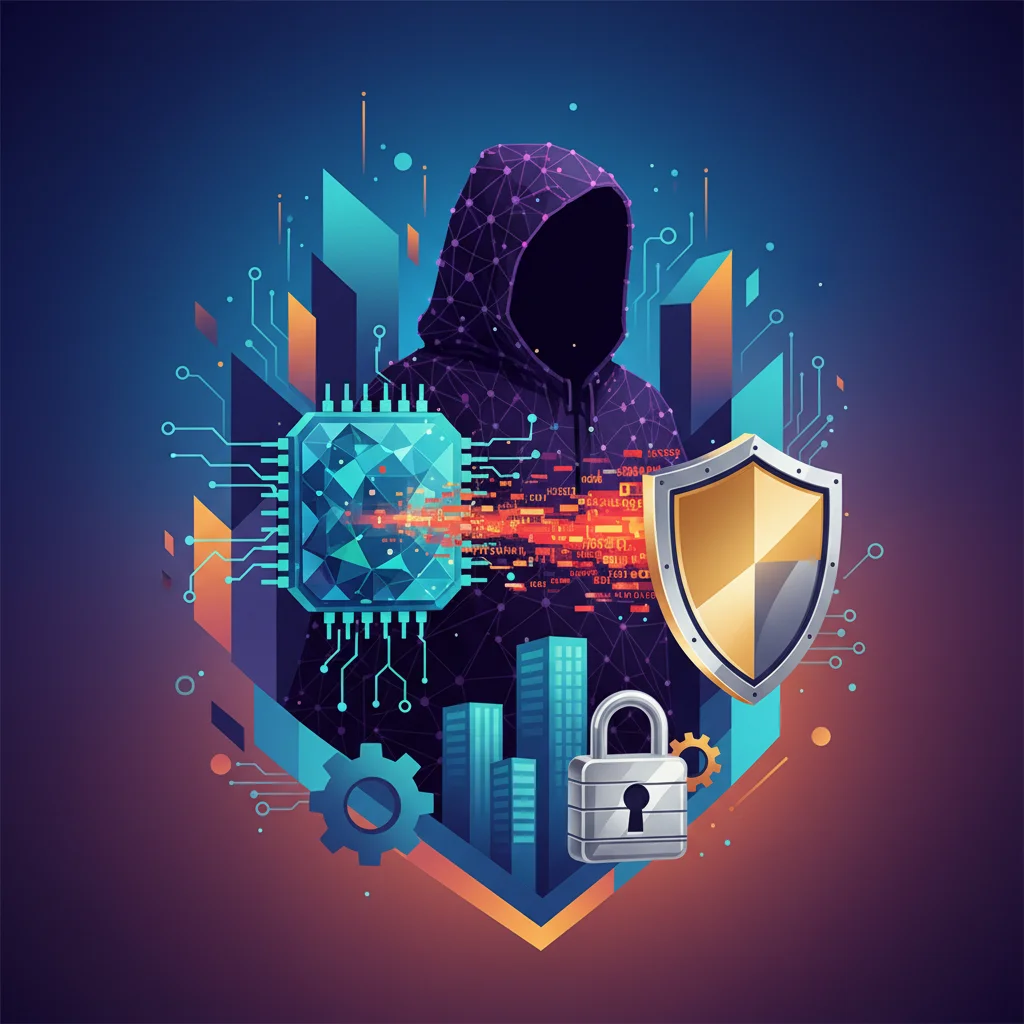
The AI Impostor: How to Protect Your Business From the Next Generation of Cyber Scams
Imagine this: It’s 4:45 PM on a Friday. An email lands in your finance team’s inbox. It’s from the CEO. The tone is urgent, the language is perfect, and the request is simple: a wire transfer needs to be processed immediately for a top-secret acquisition. It all looks legitimate. But it’s not. The CEO never sent it. You’ve just encountered a hyper-realistic scam, powered by artificial intelligence.
This scenario isn’t science fiction. It’s the new reality for businesses of all sizes. As a recent column in the Financial Times highlighted, even seasoned executives are feeling the pressure. The old advice—”look for spelling mistakes”—is dangerously obsolete. Today, we’re fighting an invisible enemy that can perfectly mimic our colleagues, bosses, and partners. This is the era of AI-powered fraud, and for entrepreneurs, developers, and startups, the stakes have never been higher.
In this post, we’ll dissect the anatomy of these sophisticated new threats, explore a modern playbook for defense, and discuss how the tech community can lead the charge in building a more secure future.
The New Anatomy of a Scam: When AI Becomes the Ultimate Weapon
For years, phishing attacks were a numbers game. Scammers would blast out millions of generic, poorly written emails hoping a tiny fraction of recipients would fall for the bait. But the integration of artificial intelligence and machine learning has transformed this landscape from a shotgun blast into a sniper shot.
These new attacks leverage several key technologies:
- Generative AI for Text: Large Language Models (LLMs) can now craft flawless, context-aware emails. They can analyze a company’s public communications or even a CEO’s social media presence to perfectly replicate their tone, vocabulary, and sentence structure. The result is an email that doesn’t just look real—it feels real.
- Voice Cloning and Deepfakes: The threat now extends beyond text. AI tools can synthesize a person’s voice from just a few seconds of audio, such as a clip from a podcast or a company all-hands video. Scammers use this to leave urgent voicemails or even engage in real-time phone calls, impersonating executives to authorize fraudulent payments. The rise of this tactic is alarming; deepfake-related fraud is seeing a tenfold increase in some regions.
- Hyper-Personalization at Scale: AI-driven automation allows criminals to research and target thousands of individuals simultaneously with unique, personalized attacks. They can scrape LinkedIn for reporting structures, company websites for project details, and social media for personal information to build a highly convincing narrative.
For startups and fast-moving tech companies, this threat is particularly acute. Flatter hierarchies, a culture of rapid execution, and a heavy reliance on cloud-based SaaS platforms create a perfect storm of opportunity for attackers.
Building Your Fortress: A Multi-Layered Defense for the AI Era
In the face of AI-powered attacks, a single firewall or antivirus software is like bringing a knife to a gunfight. The only effective strategy is “defense in depth”—a multi-layered approach that combines people, processes, and technology to create a resilient security posture. An attack might bypass one layer, but it will be caught by another.
Here’s a breakdown of what that framework looks like:
| Layer | Focus | Key Actions & Technologies |
|---|---|---|
| People (The Human Firewall) | Culture & Awareness |
|
| Process (Operational Guardrails) | Verification & Procedure |
|
| Technology (The AI Co-Pilot) | Detection & Prevention |
|
This layered approach ensures that even if a clever AI-crafted email gets past your tech filters, the mandatory verification process will stop the fraud in its tracks. The FBI’s Internet Crime Complaint Center (IC3) reported that Business Email Compromise (BEC) schemes, which are now frequently supercharged by AI, resulted in over $2.7 billion in adjusted losses in 2022, underscoring the critical need for these robust processes.
Spies, Startups, and Software: Why the UK's GCHQ is Your New Cybersecurity Partner
The Developer’s Mandate: Building the Next Generation of Secure Software
For developers, tech professionals, and entrepreneurs, this battle isn’t just about defense; it’s also about offense. We are the architects of the digital world, and we have a critical role to play in building a more secure foundation.
This responsibility manifests in two key areas:
- Secure by Design: Cybersecurity can no longer be an afterthought. For startups developing new software or SaaS platforms, security must be integrated from the very first line of code. This means embracing a Secure Software Development Life Cycle (SSDLC), where security reviews, vulnerability scanning, and ethical hacking are part of the development process, not a final-stage checklist. Solid programming practices that prevent common exploits are the first line of defense.
- Innovation in Defense: The very artificial intelligence that powers these new threats is also our greatest weapon against them. There is a massive market opportunity for innovation in the cybersecurity space. Entrepreneurs can build new tools that leverage machine learning to detect deepfakes, analyze communication patterns for signs of coercion, or automate threat intelligence. The future of security is proactive, predictive, and powered by AI.
By building security into the DNA of our products, we not only protect our own companies but also contribute to a safer digital ecosystem for everyone.
The Chip War Just Got Real: Why the Netherlands Seized a Chinese-Owned Tech Firm
The Future of Trust in a Zero-Trust World
We are in the early stages of a cybersecurity arms race. As defensive AI models get better at detecting fakes, adversarial AI models will get better at creating them. This cat-and-mouse game will accelerate, pushing us toward a future where we can’t inherently trust digital communications without a layer of technological verification.
What does this future look like? We may see the rise of:
- Cryptographically Signed Communications: Internal tools where messages are digitally signed to guarantee the sender’s identity.
- Behavioral Biometrics: Systems that continuously authenticate users based on their unique typing rhythm, mouse movements, and interaction patterns.
- Proactive Threat Hunting: AI-driven automation that doesn’t just block known threats but actively hunts for anomalous behavior within a network to identify a compromise before damage is done.
The core principle guiding this evolution is “Zero Trust”—a security model that assumes no user or device is trustworthy by default, whether inside or outside the network. Every access request must be continuously verified.
The Algorithm on Trial: Why Big Tech's Italian Lawsuit is a Wake-Up Call for All Developers
Conclusion: Vigilance is Your Ultimate Asset
The rise of AI-powered scams represents a paradigm shift in the world of cybersecurity. The threat is more personal, more intelligent, and more convincing than ever before. As we’ve seen, defending against it requires more than just technology; it demands a holistic strategy that integrates vigilant people, robust processes, and intelligent technology.
For every entrepreneur building a business, every developer writing code, and every professional navigating the digital workplace, the message is clear: the era of passive trust is over. The new currency of security is active verification. By fostering a culture of healthy skepticism and embracing the innovation that allows us to fight fire with fire, we can not only protect our businesses but also lead the way in defining trust and security for the AI age.


